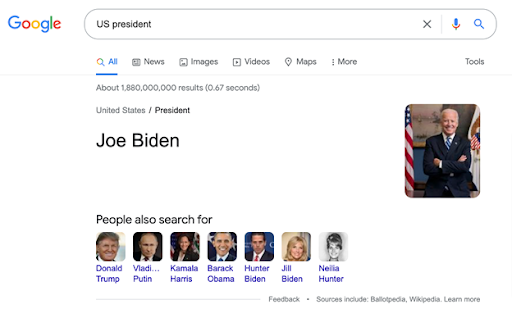Using Schema To Help Define Entities
It is possible to provide more clarity to search engines by using the “about” and “mentions” schema, as they help search engines disambiguate content by describing what a page is talking about. An SEO expert can quickly summarize long-form content into its key areas so that it is ready for knowledge graphs to consume. The expert only needs to create a page “About” with one or two entities and the “Mentions” of a few more.
It is important to note that Google has not clarified where this schema is used in its core algorithms. Here is a schema that you can add to your article:
<script type=”application/ld+json”> {
“@context”: “https://schema.org”,
“@type”: “WebPage”,
“@id”: “https://www.yoursite.com/yourURL#ContentSchema”,
“headline”: “Restaurants a small distance from the Eiffel Tower”,
“url”: “https://www.yoursite.com/yourURL”,
“about”: [
{“@type”: “Thing”, “name”: “Restaurant”, “sameAs”: “https://en.wikipedia.org/wiki/Restaurant”},
{“@type”: “Place”, “name”: “Eiffel Tower”, “sameAs”: “https://en.wikipedia.org/wiki/Eiffel_Tower”}
],
“mentions”: [
{“@type”: “Thing”, “name”: “distance”, “sameAs”: “https://en.wikipedia.org/wiki/Distance”},
{“@type”: “Place”, “name”: “Paris”, “sameAs”: “https://en.wikipedia.org/wiki/Paris”}
]
} </script>
You need to treat schema as a method to disambiguate the content instead of treating it as a tool to optimize your content. This way, you may end up driving more targeted search traffic.






















